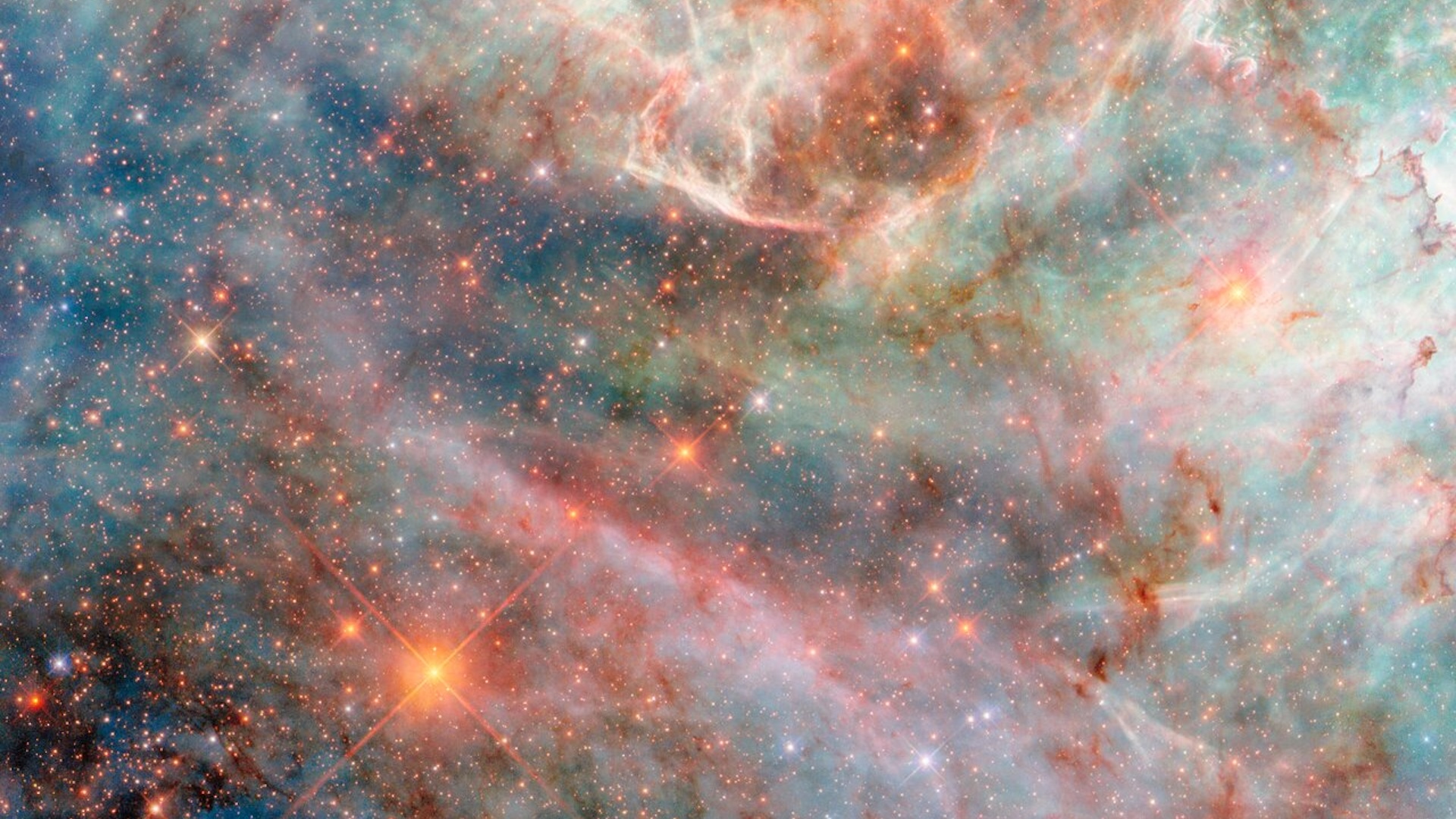Quick facts
What it is: The Large Magellanic Cloud, the largest of the Milky Way’s satellite galaxies
Where it is: 160,000 light-years away, in the constellations Dorado and Mensa
When it was shared: May 12, 2025
Why it’s so special: If you need an excuse to visit the Southern Hemisphere, the Hubble Space Telescope has just provided one. This spectacular new image, taken with Hubble’s Wide Field Camera 3, showcases the Large Magellanic Cloud (LMC), the biggest satellite galaxy of the Milky Way. It is visible only from the Southern Hemisphere.
This dense star field appears as a big, fuzzy patch in the night sky from anywhere in the Southern Hemisphere. Hubble’s new view uses five filters to isolate different wavelengths of light, including ultraviolet and infrared light, which the human eye cannot see.
The result is a starry cloudscape of wispy gas that resembles multicolored cotton candy against a background of orange and blue stars. There’s also a zoomable version available online.
Related: 42 jaw-dropping James Webb Space Telescope images
Despite being a dwarf galaxy, the LMC may be pivotal in the Milky Way’s future. Within the next 10 billion years, our galaxy is expected to collide with Andromeda — a spiral galaxy 2.5 million light-years away and the nearest major galaxy to the Milky Way. In 2019, scientists predicted that the LMC is also heading toward the Milky Way and could begin to interact with it in 2.4 billion years.
The LMC is one of many dwarf galaxies that orbit the Milky Way, but it’s one of only two that are visible to the naked eye. The other is the Small Magellanic Cloud (SMC), which can be seen close to the LMC between October and February from the Southern Hemisphere.
The LMC and the SMC are connected by a bridge of gas called the Magellanic Bridge, indicating that they may have interacted in the past. Both dwarf galaxies have been orbiting the Milky Way for about 1.5 billion years. Recent research indicates that the SMC is being torn apart and may in fact be two galaxies. Both dwarf galaxies are named after Portuguese explorer Ferdinand Magellan.
For more sublime space images, check out our Space Photo of the Week archives.
